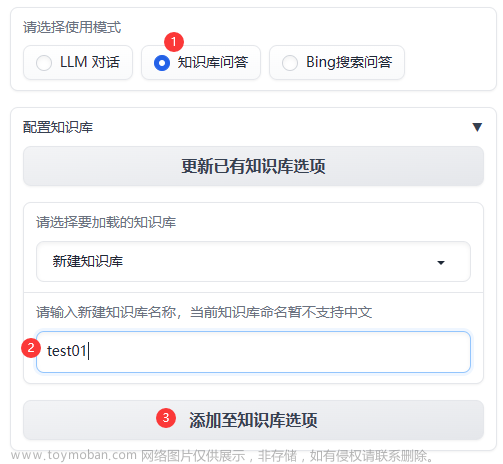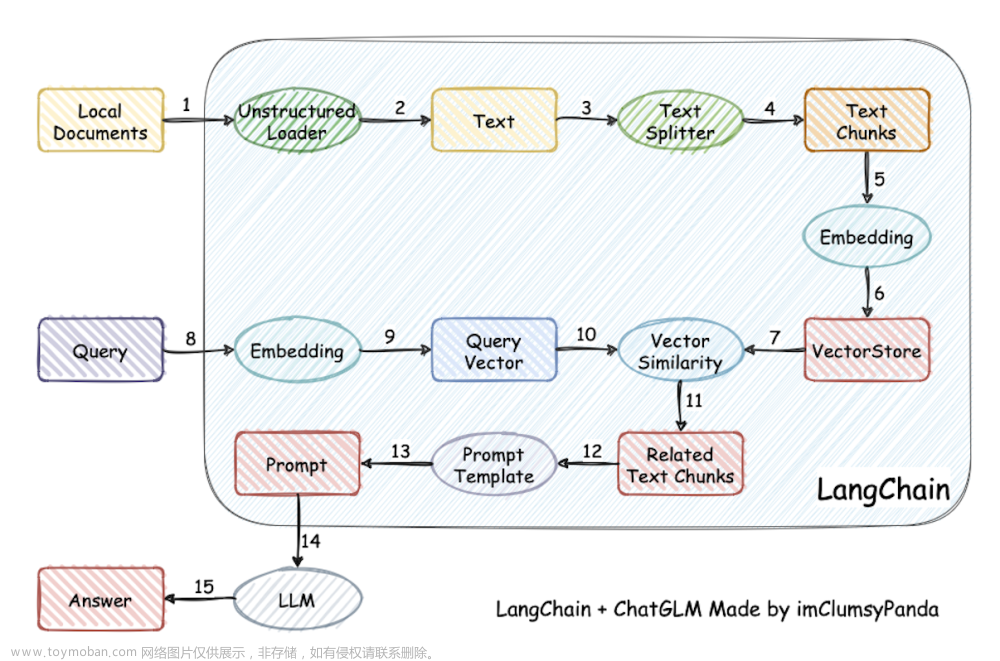简介
langchain中有个比较有意思的prompt template叫做FewShotPromptTemplate。
他是这句话的简写:“Prompt template that contains few shot examples.”
什么意思呢?就是说在Prompt template带了几个比较简单的例子。然后把这些例子发送给LLM,作为简单的上下文环境,从而为LLM提供额外的一些关键信息。
这种few shot examples非常有用,如果你希望LLM可以基于你提供的prompt中的内容进行回答的时候,就需要用到这个东西了。
你可以把Few-shot prompt templates看做是简单的知识库,后面我们会具体讲解如何搭建自己的知识库。
现在先提前了解一下它的魅力吧。
带few shot examples的例子
加入现在我要问chatgpt这样一个问题:
请问工具人的代表作是什么?
因为这里的工具人是我虚拟出来的一个人,真实并不存在,所以chatgpt的回答可能是下面这样的:
工具人的代表作是迈克尔·佩拉的《开膛手杰克》。
因为chatgpt对不会的东西可能会乱回答,所以上面的答案是在合理范围之内的。
那么怎么才能让chatgpt按照我们虚构的内容进行回答呢?
答案就是在prompt中提供有用的信息,比如下面这样子:
问题: 请帮忙描述下古龙?
回答: 姓名:古龙,出生日期:1937年,代表作:《楚留香传奇系列》、《陆小凤系列》、《萧十一郎系列》
问题: 请帮忙描述下金庸?
回答: 姓名:金庸,出生日期:1924年,代表作:《射雕英雄传》、《神雕侠侣》、《天龙八部》
问题: 请帮忙描述下工具人?
回答: 姓名:工具人,出生日期:1988年,代表作:《工具人传奇》、《工具人上班》、《工具人睡觉》
问题: 请问工具人的代表作是什么?
下面是chatgpt的回答:
工具人的代表作是《工具人传奇》、《工具人上班》和《工具人睡觉》。
所以大家想到了什么?
没错,就是可以使用prompt中的信息做知识库,让chatgpt从这个给定的知识库中查询出有用的东西,然后再用自己的语言组织起来,返回给用户。
在langchain中使用FewShotPromptTemplate
实际上,上面的问题和答案都是promot内容的一部分,所以可以保存在PromptTemplate中。
而langchain有与之对应的专门的一个类叫做FewShotPromptTemplate。
上面的问答,其实可以保存在一个json数组中,然后再在FewShotPromptTemplate中使用:
from langchain.prompts.few_shot import FewShotPromptTemplate
from langchain.prompts.prompt import PromptTemplate
examples = [
{
"question": "请帮忙描述下古龙?",
"answer":
"""
姓名:古龙,出生日期:1937年,代表作:《楚留香传奇系列》、《陆小凤系列》、《萧十一郎系列》
"""
},
{
"question": "请帮忙描述下金庸?",
"answer":
"""
姓名:金庸,出生日期:1924年,代表作:《射雕英雄传》、《神雕侠侣》、《天龙八部》
"""
},
{
"question": "请帮忙描述下工具人?",
"answer":
"""
姓名:工具人,出生日期:1988年,代表作:《工具人传奇》、《工具人上班》、《工具人睡觉》
"""
}
]
首先我们来看一下FewShotPromptTemplate中都有哪些属性:
examples: Optional[List[dict]] = None
"""Examples to format into the prompt.
Either this or example_selector should be provided."""
example_selector: Optional[BaseExampleSelector] = None
"""ExampleSelector to choose the examples to format into the prompt.
Either this or examples should be provided."""
example_prompt: PromptTemplate
"""PromptTemplate used to format an individual example."""
suffix: str
"""A prompt template string to put after the examples."""
input_variables: List[str]
"""A list of the names of the variables the prompt template expects."""
example_separator: str = "\n\n"
"""String separator used to join the prefix, the examples, and suffix."""
prefix: str = ""
"""A prompt template string to put before the examples."""
template_format: str = "f-string"
"""The format of the prompt template. Options are: 'f-string', 'jinja2'."""
validate_template: bool = True
"""Whether or not to try validating the template."""
其中examples和example_selector是可选的,其他的都是必须的。
example_prompt是用来格式化一个特定example的PromptTemplate。
如下所示:
example_prompt = PromptTemplate(input_variables=["question", "answer"], template="问题: {question}\n 回答:{answer}")
print(example_prompt.format(**examples[0]))
问题: 请帮忙描述下古龙?
回答: 姓名:古龙,出生日期:1937年,代表作:《楚留香传奇系列》、《陆小凤系列》、《萧十一郎系列》
上面代码中,我们使用PromptTemplate对队列中的数据进行了格式化。
有了examples和example_prompt,我们就可以构建FewShotPromptTemplate了:
prompt = FewShotPromptTemplate(
examples=examples,
example_prompt=example_prompt,
suffix="问题: {input}",
input_variables=["input"]
)
print(prompt.format(input="请问工具人的代表作是什么?"))
这里输出的内容和我们最开始的内容是一样的。
使用ExampleSelector
在上面的例子中,我们实际上是把所有的shot examples都提交给了大语言模型,但实际上并不是必须的。因为有些examples跟问题是没有关联关系的。
所以langchain给我们提供了一个类叫做ExampleSelector,可以通过这个selector来选择跟我们问题相关的一些examples,从而减少不必要的内容传输。
这里我们使用SemanticSimilarityExampleSelector,它的作用是根据语义的相似度来选择examples:
from langchain.prompts.example_selector import SemanticSimilarityExampleSelector
from langchain.vectorstores import Chroma
from langchain.embeddings import OpenAIEmbeddings
example_selector = SemanticSimilarityExampleSelector.from_examples(
# 要选择的examples
examples,
# embedding用来判断文本的相似度
OpenAIEmbeddings(),
# 向量数据库,用来存储embeddings
Chroma,
# 最终要选择的长度
k=1
)
# 选择最为相似的作为输入
question = "请问工具人的代表作是什么?"
selected_examples = example_selector.select_examples({"question": question})
print(f"下面是和这个问题最相似的examples: {question}")
for example in selected_examples:
print("\n")
for k, v in example.items():
print(f"{k}: {v}")
最后,我们同样的把ExampleSelector和FewShotPromptTemplate结合起来一起使用:文章来源:https://www.toymoban.com/news/detail-609535.html
prompt = FewShotPromptTemplate(
example_selector=example_selector,
example_prompt=example_prompt,
suffix="问题: {input}",
input_variables=["input"]
)
print(prompt.format(input="请问工具人的代表作是什么?"))
总结
如果你有一些简单的内容需要提供给大语言模型,那么可以使用这个方式。但是如果你有很多内容的话,比如知识库。这种实现就处理不了了。那么如何构建一个知识库应用呢?我们后续分享。文章来源地址https://www.toymoban.com/news/detail-609535.html
到了这里,关于在langchain中使用带简短知识内容的prompt template的文章就介绍完了。如果您还想了解更多内容,请在右上角搜索TOY模板网以前的文章或继续浏览下面的相关文章,希望大家以后多多支持TOY模板网!








